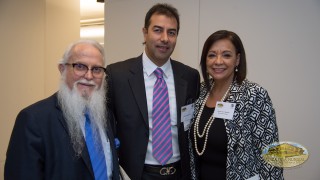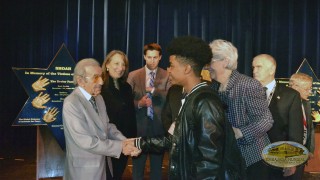GEAP arrives for an official visit at the Organization of American States
A special Commission from the Global Embassy of Activists for Peace, led by its CEO, Dr. William Soto Santiago, traveled to the premises of the Organization of American States (OAS) in Washington, on December 2015 with the purpose of socializing with General Secretary, Dr. Luis Almagro, about the projects the Institution carries out in Latin America.
The main goal of the programs and projects developed by the GEAP is the achievement and strengthening of peace, through the well-being and happiness of the human family, nations, and the sustainability of Mother Earth. To achieve this goal, in the framework of values and universal principles, the GEAP promotes the defense of Human Rights and the Rights of Mother Earth, which allows them to identify with other organizations that stand on the foundation of democracy, human rights, security and development, which is the case of the OAS.

“Educating to Remember” took the living testimony of three survivors of the Holocaust to the headquarters of the OAS.
In an emotional gathering, Reuwen Sosnowicz, Saúl Dreier and David Bayer shared their life story in the Forum “Educating to Remember,” carried out in the “Rúben Darío” room, at the headquarters of the Organization of American States.

Before the eyes of the audience, among them the senator of the state of Illinois, Dr. Iris Martinez; Reuwen, Saúl and David spoke about their experiences in the events that framed the barbarism of the Holocaust during World War II.
In addition to remembering the tragedy that took the lives of millions of human beings, the testimony of the survivors involves a message of hope and love that clings to life and teaches others about the importance of believing that it is possible to live in peace.
“What happened was that my nodes got swollen because of mal nutrition, because of the water, because of the lack of food. (…) They put me down on a table at the clinic, they tied me up, without injections, without anything… they cut me up. An experiment. And I have the documentation here of this experiment (…) The reason why I brought it with me is because there are many that deny this happened or that this could not have happened. I am a living witness.”
“I am here because of my determination to not give up.” David Bayer.
In his intervention, Dr. William Soto stated, among others, that it is important to count with the commitment of international organisms to create spaces that promote actions focused on teaching and the defense of Human Rights; making an emphasis in the personal commitment of sharing the story of the survivors as a tool of prevention.
“The only thing that guarantees that people will raise awareness on the value of life is education: The fundamental tool which will allow us to work in an effective way in any part of the world and with people of different nationalities, cultures, ideologies, languages, ages, religions and beliefs.”
“What can I do to keep this alive?”

In this space of historic memory, Reuwen Sosnowicz and Saúl Dreier showed that it is possible to be positive in time, despite their stories.
“What can I do to keep this alive?” Was the question Saúl Dreier asked himself one and a half years ago, while reading an article on the internet that reported the death of a prominent 108 year old pianist and survivor of the Holocaust.
Although, in the beginning when he told his wife and closest friends about his idea, they thought it was far-fetched but he insisted that he must do something. Today, he is the founder of the “Holocaust Survivor Band,” a well-known musical group which has offered concerts in the United States. Las Vegas and Kennedy Center in Washington D.C. are only some of the places where they have presented themselves. In 2015, the New York Times registered a documentary about his band, and gradually they have become known.
Through this, a story that brings Saúl and Reuwen together has begun, different to the tragic story of the Nazi Holocaust. In the midst of music and instruments, they found a way to transmit their hopeful stories to others.
Following the meeting, their commemorative plaques were revealed along with a laminate that registers a historical overview of what was lived during the Holocaust, and they offered a musical show in which the participants of the event enjoyed the “Holocaust Survivor Band.”



